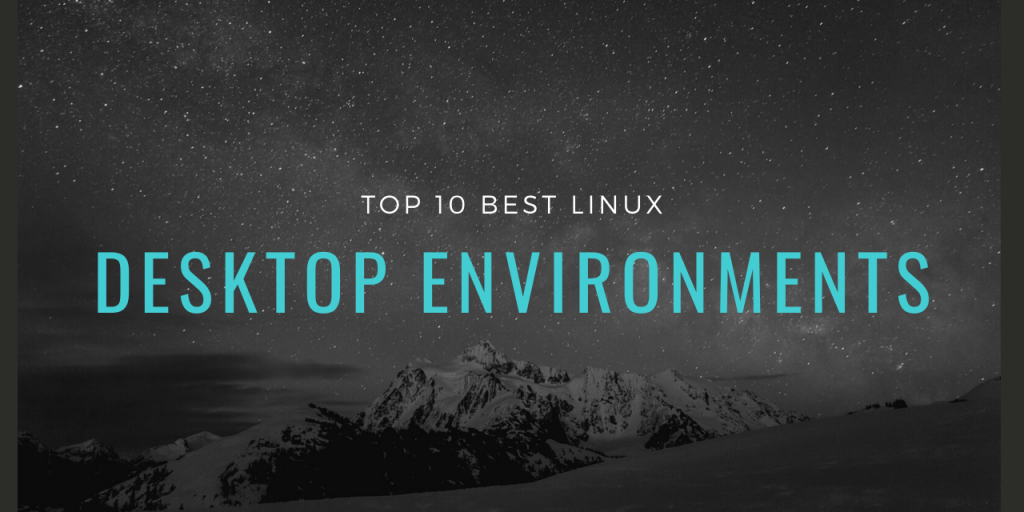Let’s look at some of the most beautiful, customizable, and literally, the best Linux desktop environments today. Even though Linux as an Operating system is portrayed as a really difficult to use operating system out there, it can be customized to be very aesthetically beautiful compared to even the macOS! This is because, unlike the mainstream operating systems, Linux offers a variety of desktop environments.
Best Linux Desktop Environments
One of the most appreciated features of Linux is its support for users to try a wide variety of desktop environments on their system. Any user can try from tons of available options to find out which Linux desktop environment is their favorite.
However, checking out such a huge list of available options can be both confusing and tiring. So today we will lend you a hand by narrowing down the options. Here are the top ten best Linux desktop environments available to you based on our experience.
1. GNU GNOME 3 Desktop
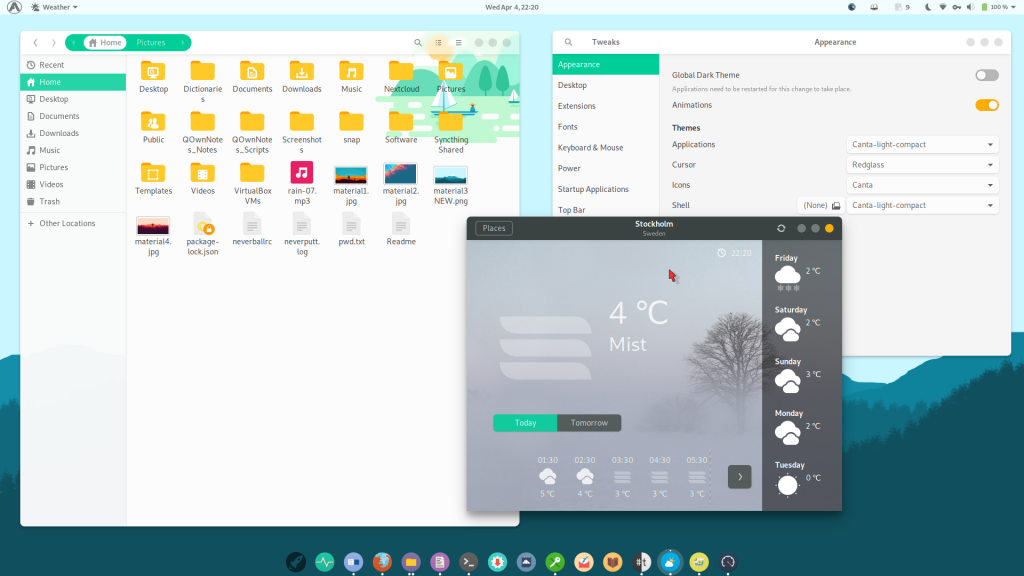
- GNOME Official Website: https://www.gnome.org/
- GNOME Themes: https://www.gnome-look.org/
There is a reason why GNOME is the default desktop environment for so many Linux distributions. No desktop environment comes even close to GNOME’s popularity. It’s simple yet powerful design makes it attractive for all Linux users. In it’s latest stable release GNOME 3, this open-source, user-friendly desktop environment displays a sleek, modern touch. The pros of using GNOME 3 is its accessibility along with powerful tools, theme and extension support, window snapping, and other important features.
It also allows you to extend the functionality using GNOME Shell extensions and customise the desktop environment to your needs. However, the modern graphical interface makes GNOME 3 more resource consuming as compared to a few other options on our list today. Further, managing extensions can be a chore.
Even though a lot of Linux distributions use Gnome by default, you can install this desktop environment on distributions that do not have GNOME by default. Install gnome on your Linux distribution with the following commands:
# CentOS or Red Hat Linux
sudo yum groupinstall "GNOME Desktop"
# Ubuntu/Debian based operating systems
sudo apt install tasksel #Tasksel installs related and dependent packages automatically
sudo tasksel install desktop gnome-desktop #Using tasksel to install the complete Gnome desktop
2. KDE Plasma 5
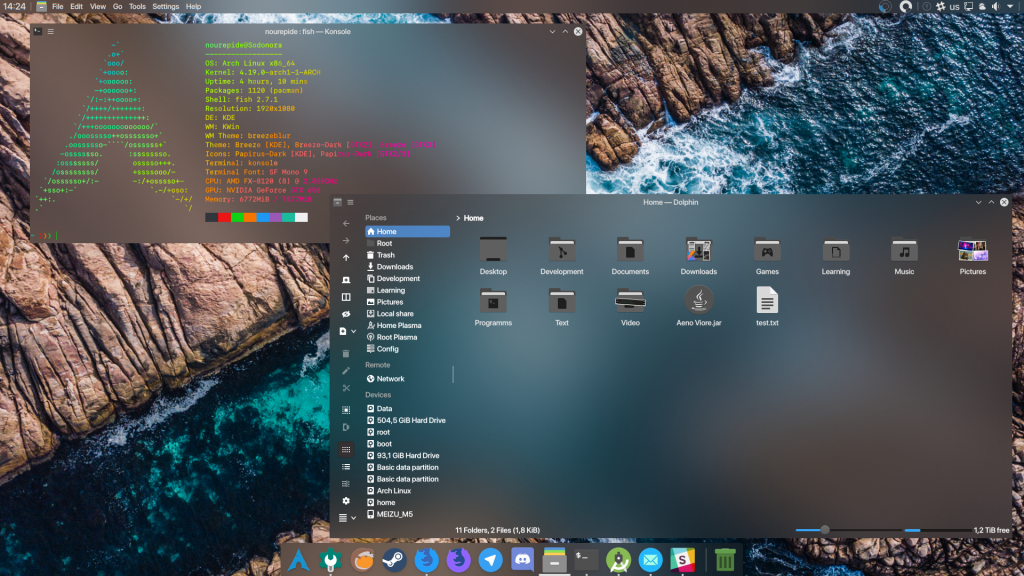
- KDE Official Website: https://kde.org/
- KDE Themes: https://store.kde.org/
When you need an advanced desktop environment that is rich with features and offers a powerful interface, KDE Plasma 5 is the answer. It comes with a polished modern interface which focusses on performance. KDE Plasma 5 offers the most customizable and flexible experience to its users. While it comes with its own set of tools, it supports programs that are not developed with the KDE Development Platform.
However, the graphical interface does make slightly resource-heavy for your system. Also, the wide variety of tools and utilities available with KDE Plasma 5 causes some components to feel a bit too complicated to use.
# CentOS/Red Hat Linux
sudo yum groupinstall -y "KDE Plasma Workspaces"
# Ubuntu/Debian based operating systems
sudo apt install kde-plasma-desktop # Gives a minimal KDE install with a few applications
sudo apt install kubuntu-desktop # For a complete KDE install
3. MATE Desktop
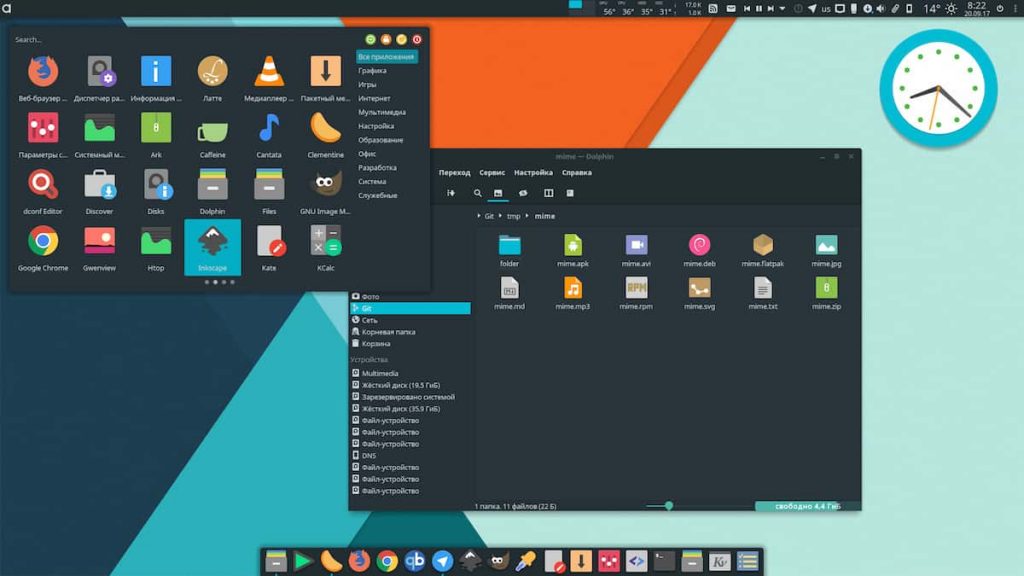
- MATE Official Website: https://mate-desktop.org/
- MATE Themes: https://www.mate-look.org/browse/
The GNOME desktop environment has always had a passionate following. GNOME 2 was widely loved by users for its design and features, but the release of GNOME 3 didn’t sit well with all GNOME fans. The MATE desktop environment was created to use the best parts of GNOME 2 and develop it in a different direction from GNOME 3. The MATE desktop environment might appear a bit old to some users, but that is intentional. It brings together the classic desktop experience with a feel of modernism.
It provides users with a desktop environment which is tried and tested, highly customisable and seamless. It is also a low resource desktop for Linux, allowing you to run it on systems which may be old or less powerful.
# CentOS/Red Hat Linux
sudo yum install -y epel-release
sudo yum groupinstall -y "MATE Desktop"
# Ubuntu/Debian based operating systems
sudo apt install -y ubuntu-mate-desktop
4. Cinnamon Desktop
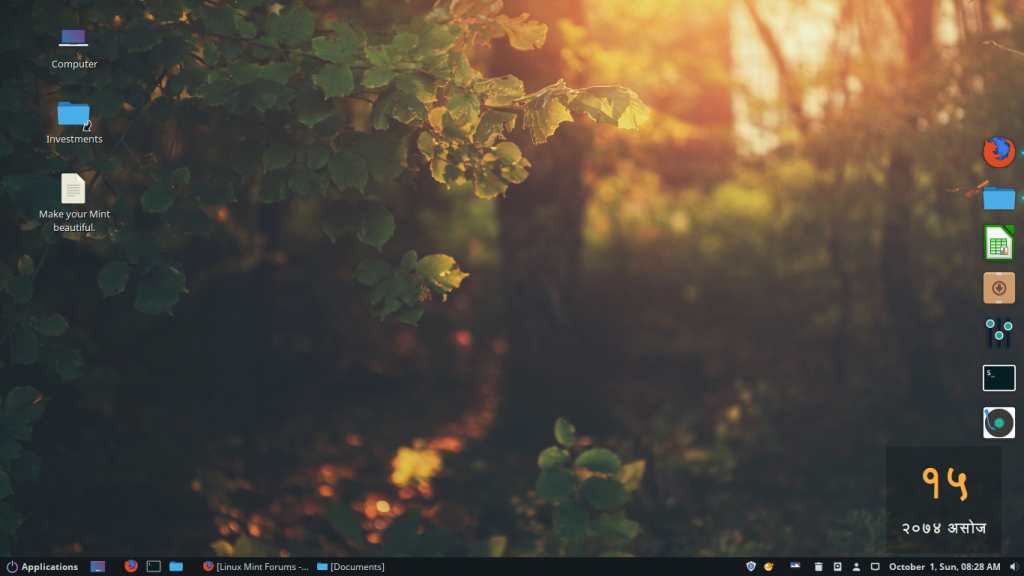
- Cinnamon Official Website: https://cinnamon-spices.linuxmint.com/ and https://github.com/linuxmint/Cinnamon/
- Cinnamon Themes: https://cinnamon-spices.linuxmint.com/themes/ and https://www.cinnamon-look.org/browse/
While MATE was a fork of GNOME 2, the Cinnamon desktop environment was built based on GNOME 3. It has a simplistic interface that is similar to Windows, helping new Linux users who might be uncomfortable with the usual Linux desktop environments. Cinnamon offers the users a polished and sleek look, packed with all the standard functionalities in a desktop environment offering a good level of customization. However, some Linux users find it to not be touch-friendly due to its small icons.
# CentOS/Red Hat Linux
yum groupinstall "Server with GUI" -y #This gets you the dependency packages
yum install cinnamon -y
# Ubuntu/Debian based operating systems
sudo apt install cinnamon
5. Xfce Desktop
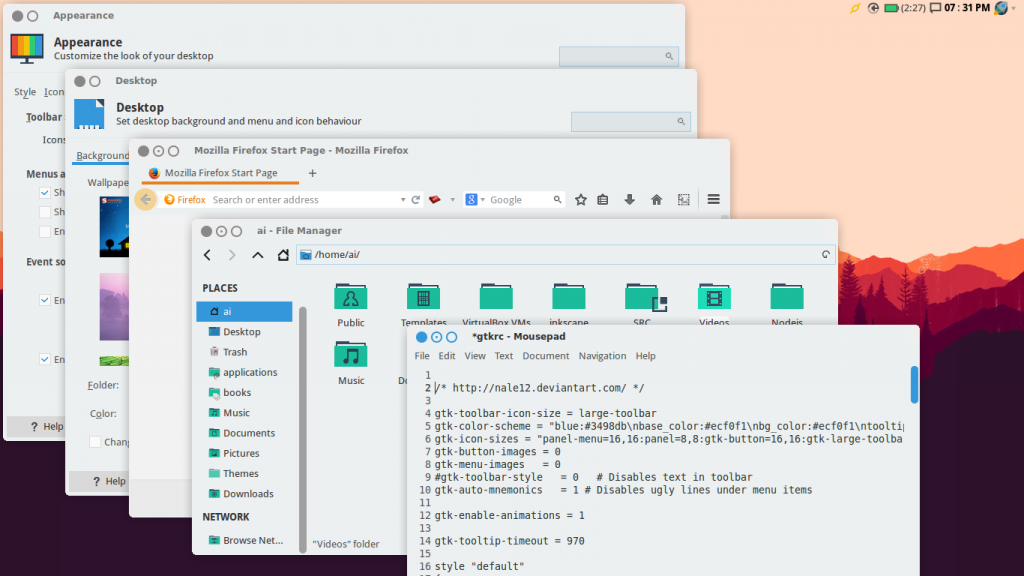
- XFCE Official Website: https://xfce.org/
- XFCE Themes: https://www.xfce-look.org/
When you are looking for elegant, lightweight desktop environments for your system, the Xfce desktop is your answer. It provides you with a user-friendly and appealing interface with a modern touch. The lightweight nature makes it suitable even for older machines. It offers the users a sleek interface with a good amount of customization and functionality. However, it is not highly ranked in terms of accessibility as the Xfce desktop environment does not support touch commands.
# CentOS/Red Hat Linux
yum groupinstall "Xfce" -y
# Ubuntu/Debian based operating systems
sudo apt install xfce4
6. Budgie Desktop
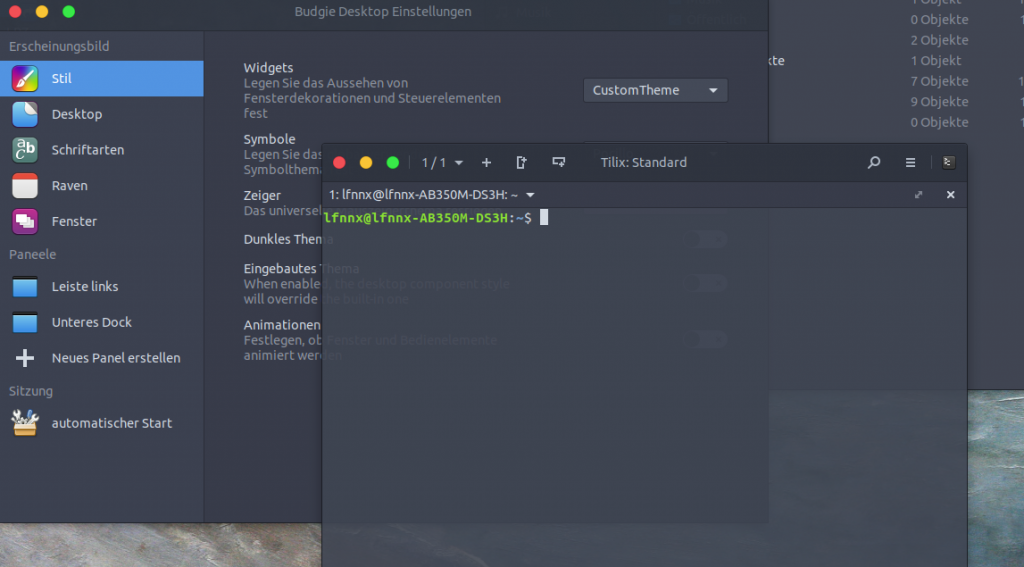
- Budgie Desktop Official Website: https://getsol.us/
- Budgie Desktop Themes (GTK3 Themes work): https://www.gnome-look.org/browse/cat/135/
The Budgie desktop environment is yet another GNOME-based desktop. While it was developed by the team behind the Solus Linux, it’s elegant and intuitive interface led to it being adopted for other distributions such as the SUSE and Arch-based distributions. Ubuntu created their own version of the Budgie desktop environment named Ubuntu Budgie. While it offers you a solid desktop environment package with moderate resource requirements, it is available only on a few Linux distributions.
# CentOS/Red Hat Linux
wget http://download.opensuse.org/repositories/home:ikeydoherty:evolve/Fedora_20/home:ikeydoherty:evolve.repo
yum install budgie-desktop
# Ubuntu/Debian based operating systems
sudo tasksel install ubuntu-budgie-desktop
7. Unity Desktop
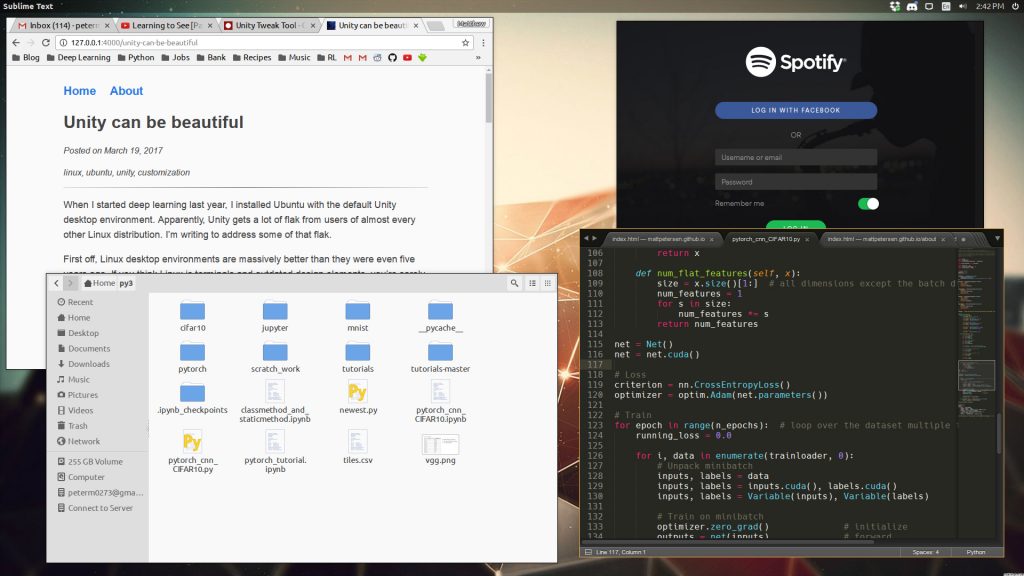
- Unity Official Website: https://unity8.io/
- Unity Themes: https://launchpad.net/~noobslab/+archive/ubuntu/themes
The GNOME connection continues with Unity, which is a graphical desktop shell for the GNOME desktop environment. Unlike other options on this list, Unity is not a complete desktop environment. It is essentially a graphical interface that runs over the existing GNOME desktop environment while adding new technology and features to your system. Unity was designed to consistently provide users with elegant computing experience and a broad range of features. Hence, it is ideal for people who prefer the GNOME desktop environment but wish for extended functionality.
# Ubuntu/Debian based operating systems
sudo apt install ubuntu-unity-desktop
8. Openbox
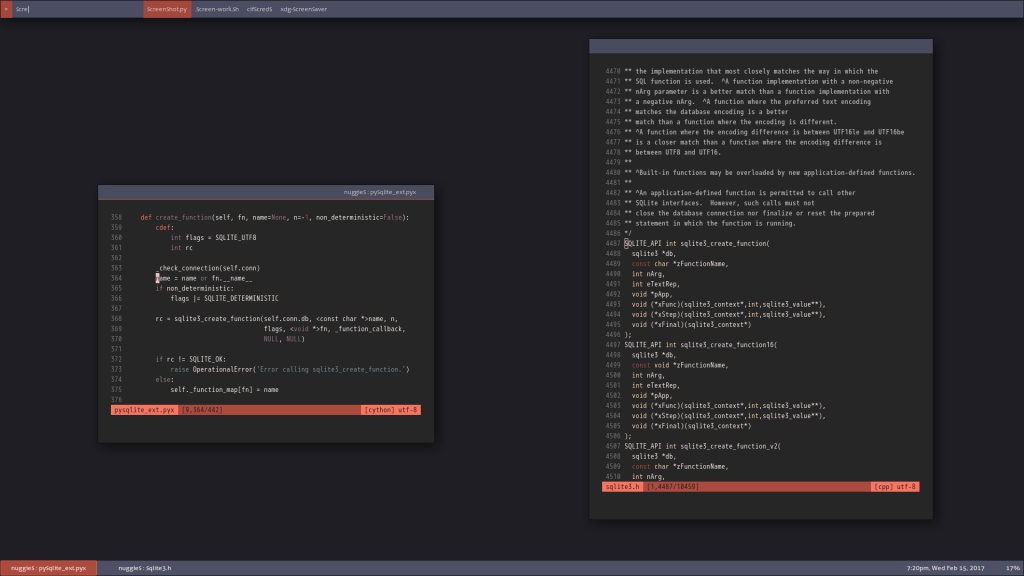
- Openbox Official Website: http://openbox.org/wiki/Main_Page
- Openbox Themes: http://openbox.org/download-themes.php
An extremely barebones desktop environment or I’d say, window manager. Openbox is a window manager that can be used standalone without the use of any underlying desktop environment. This makes it a valid candidate to be added to the list. And it’s my personal favorite. As a Linux user, minimal everything is our mantra. And with Openbox, that’s exactly what you get.
# Either download and install, or use this epel repository to install Openbox on Centos
https://centos.pkgs.org/7/epel-x86_64/openbox-3.5.2-6.el7.x86_64.rpm.html
# Ubuntu/Debian based operating systems
sudo apt install openbox obconf
9. LXQt Desktop
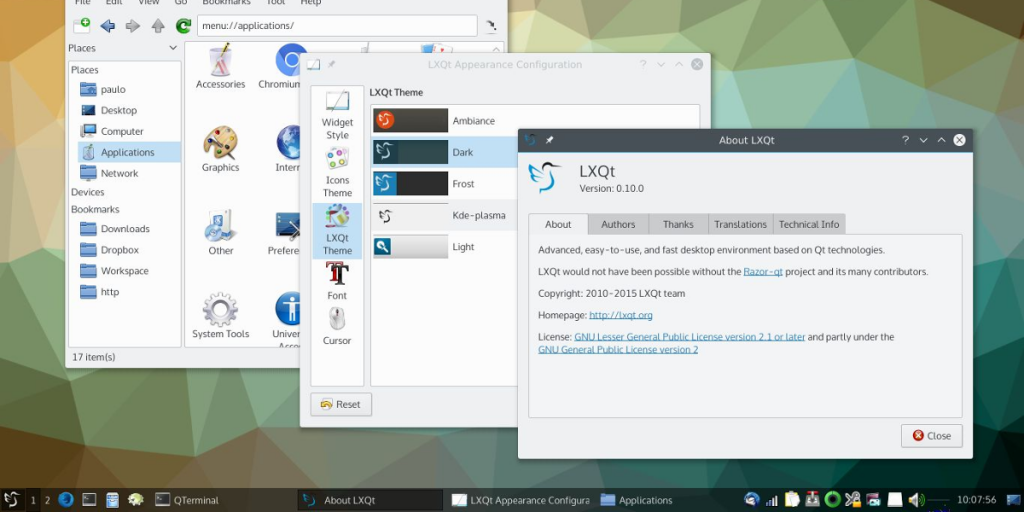
- LXQt Official Website: https://lxqt.github.io/
- LXQt Themes: https://www.gnome-look.org/browse/cat/446/page/1/ord/latest/
When running cloud servers or old machines, resource management more essential than ever. A good choice for such cases should be the LXQt desktop environment. It offers you a free, open-source lightweight solution to your needs. Being the latest version of LXDE, LXQt has a fast and simple with low RAM and CPU requirements. Its multilingual support, attractive interface, and wide range of features make it a remarkable choice for Linux users globally. The LXQt desktop environment is an ideal optimized interface for your needs.
# CentOS/Red Hat Linux
yum install lxqt*
# Ubuntu/Debian based operating systems
sudo apt install lxqt
10. LXDE – Lightweight X11 Desktop Environment
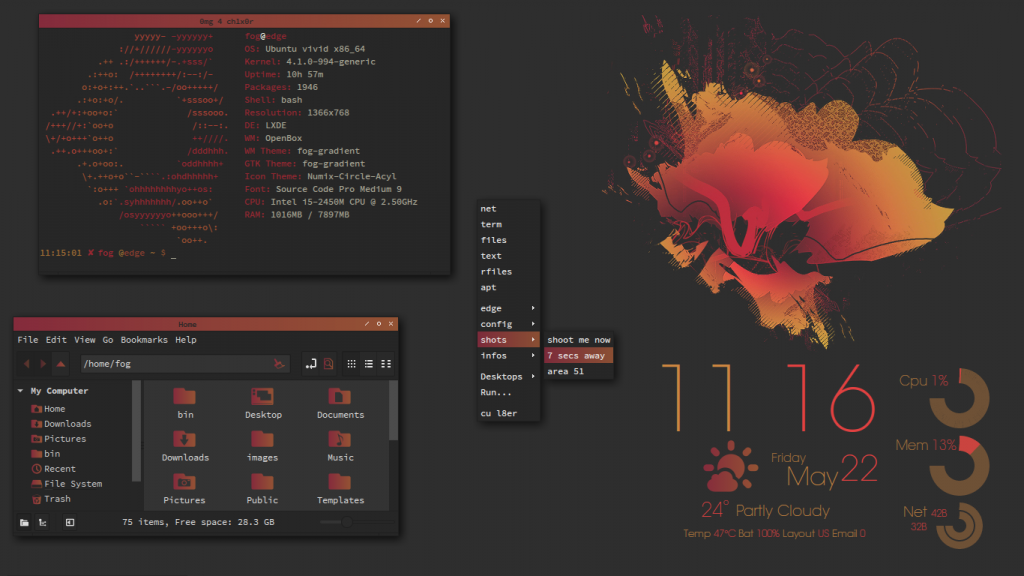
- LXDE Official Website: https://www.lxde.org/
- LXDE Themes (Works with GTK2 themes): https://www.gnome-look.org/p/1013967/
LXDE is one of the most lightweight yet complete desktop environments. That’s where it gets its name from. Due to the fact that Ubuntu is heavy, and a lot of users did not want to go through the trouble of uninstalling the default packages, another Ubuntu-based distro was born. The name is Lubuntu, and guess which desktop environment it uses? LXDE.
This gave a lot of users the ease of using Ubuntu without the bloated software and UI that comes by default. If you want to try LXDE without switching your operating system (why would you do that anyway?), then go ahead and run one of the commands based on the operating system that you’re using.
# CentOS/Red Hat Linux
sudo yum install lxde
# Ubuntu/Debian based operating systems
sudo apt install lxde
Ending words…
With a wide variety of options to choose from, there are many contenders for your needs. These were our picks of the top ten best available Linux desktop environments in the market. Did we miss any of your preferred choices? Let us know in the comments below.
